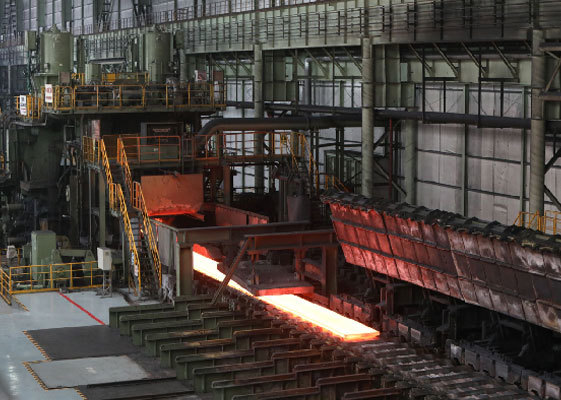H-beam: High-performance structural material in modern architecture
Release Time:
2025-02-19
H-beam: High-performance structural material in modern architecture
H-beam, named for its unique "H"-shaped cross-section design, is a highly efficient and economical structural steel. Its cross-section shape is carefully designed to ensure the material's excellent bending resistance in multiple directions, thus playing a vital role in modern architecture.
The structural characteristics of H-beam are particularly prominent. The right-angled components, wide flanges and excellent lateral stiffness together give H-beam excellent performance when subjected to bending loads. Compared with traditional I-beams, the bending resistance of H-beams is increased by about 5%-10%. In addition, the parallel design of its legs and the right-angle ends not only simplify the assembly process of the components, but also significantly reduce the workload of welding and riveting, further improving construction efficiency. At the same time, H-beams have a larger section modulus and lighter weight. Compared with ordinary I-beams, under the same load-bearing conditions, they can save 10-15% of metal and reduce the weight of the building structure by 30-40%.
In terms of materials, H-beams offer a variety of options, such as Q235B, SM490, SS400, Q345, Q345B, etc. These materials can meet the performance requirements of different application scenarios. According to different production processes, H-beams can be divided into two types: hot-rolled and welded. Among them, hot-rolled H-beams are further subdivided into three types: wide flange (HW), middle flange (HM) and narrow flange (HN), each type has a unique size ratio and scope of application.
The wide applicability of H-beams is also a highlight. In the industrial field, it is widely used as steel structure load-bearing brackets for industrial structures, steel piles and supporting structures for underground projects, and structural supports for industrial equipment such as petrochemicals and electric power. In the construction field, H-beams have become the preferred material for structures such as large-span steel bridges, ships, and machinery manufacturing frames. In addition, the beam brackets of trains, cars, and tractors, as well as port conveyor belts, high-speed baffle brackets and other scenes are also inseparable from the strong support of H-beams.
The advantages of H-shaped steel are not only reflected in its structural strength and wide application scenarios, but also in the economic and social benefits it brings. Compared with concrete structures, H-shaped steel structures have lighter self-weight, reduce the internal forces of structural design, and reduce the requirements for building structure foundation treatment, thereby simplifying the construction process and reducing the cost. At the same time, the H-shaped steel structure has a larger bay, making the building layout more flexible and diverse, and effectively increasing the use area of the structure. In addition, the environmental performance of H-shaped steel is also commendable. The use of H-shaped steel for dry construction has low noise, less dust, and less damage to land resources. After the service life of the building structure expires, the amount of solid waste generated by the demolition of H-shaped steel is small, and the scrap steel resources have a high recycling value, which is conducive to the protection of the ecological environment.
It is worth noting that the market demand for H-shaped steel in my country continues to grow. Although the production capacity of H-shaped steel in my country has increased in recent years, it is still difficult to meet the strong demand of the market. This provides a broad development space for the production and application of H-shaped steel.
In short, H-shaped steel has become an indispensable and important material in modern architecture with its unique structural characteristics, diverse material selection, wide application scenarios, and significant economic and social benefits. With the continuous advancement of science and technology and the continuous development of the construction industry, the application prospects of H-shaped steel will be broader.
Keywords:
Latest News
Submit your request immediately to get the best price
We have a large stock of commonly used models and sizes in stock, which can be delivered in the shortest possible time, ensuring that it does not delay your production cycle




